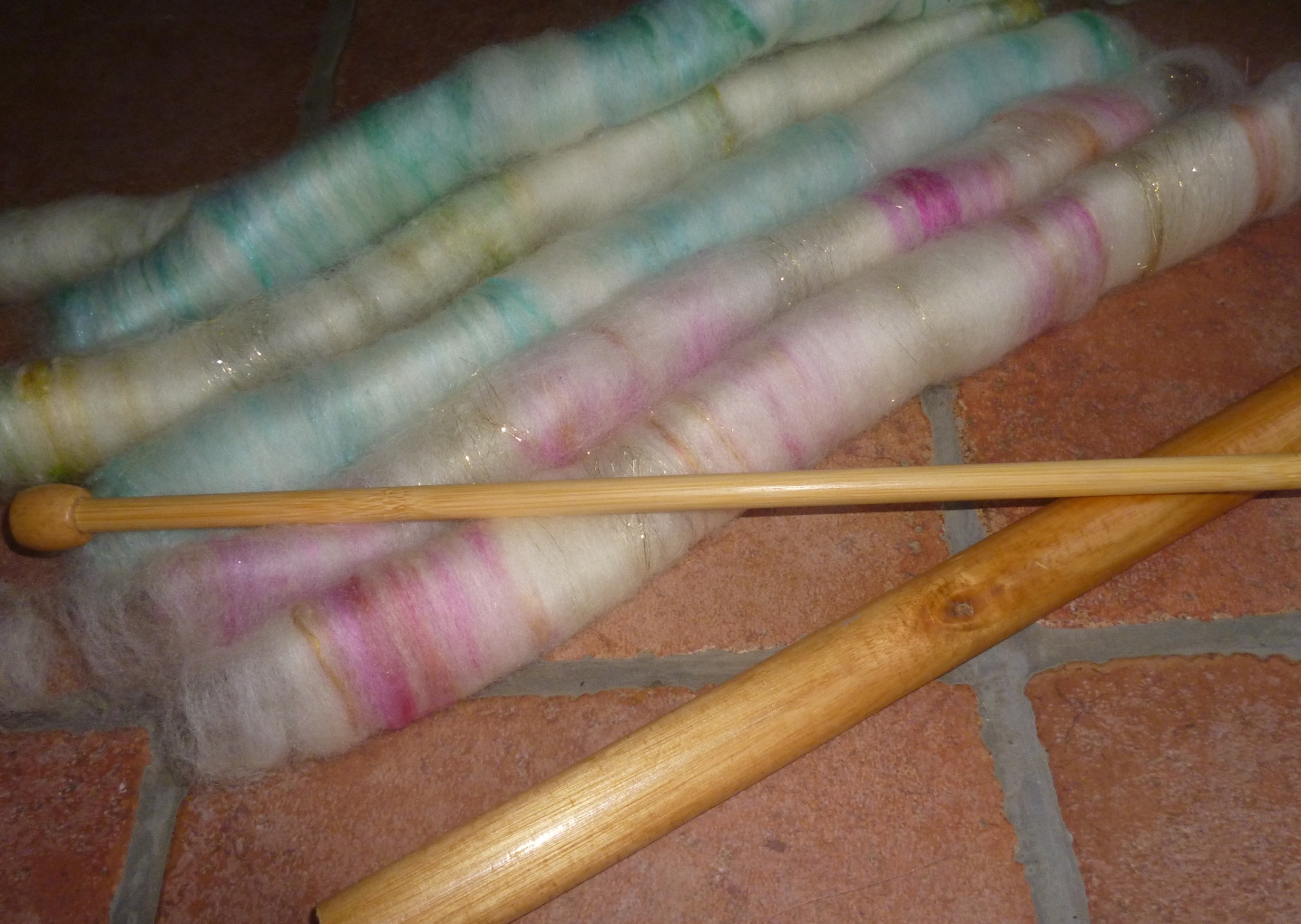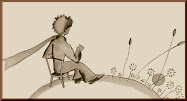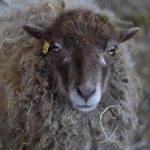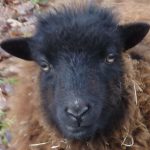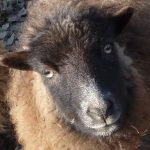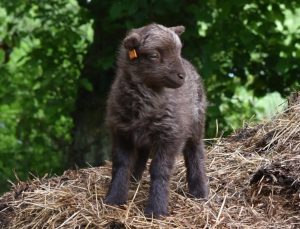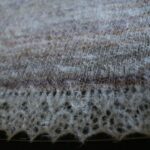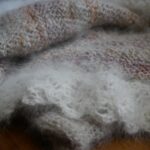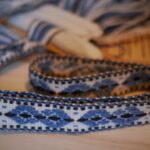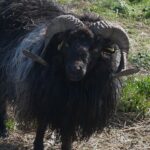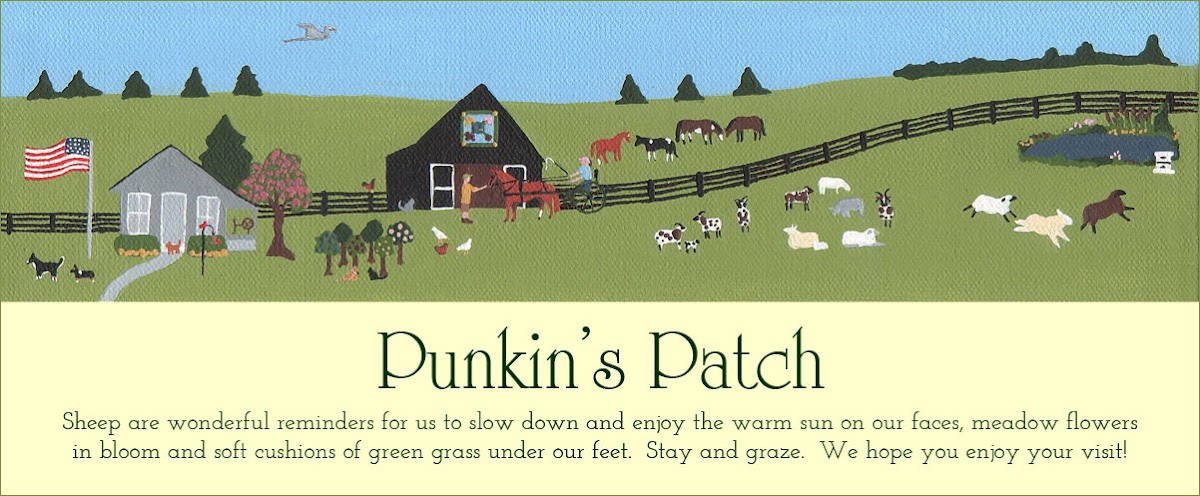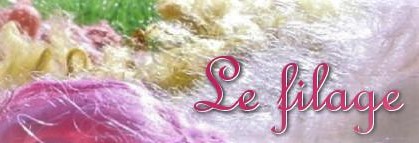Des fois, plus grande est bien meilleure !
Who says that size isn’t important ?
Sometimes bigger is better !
Qui ose dire que la taille n’importe pas ?
Des fois plus grande est bien meilleure !
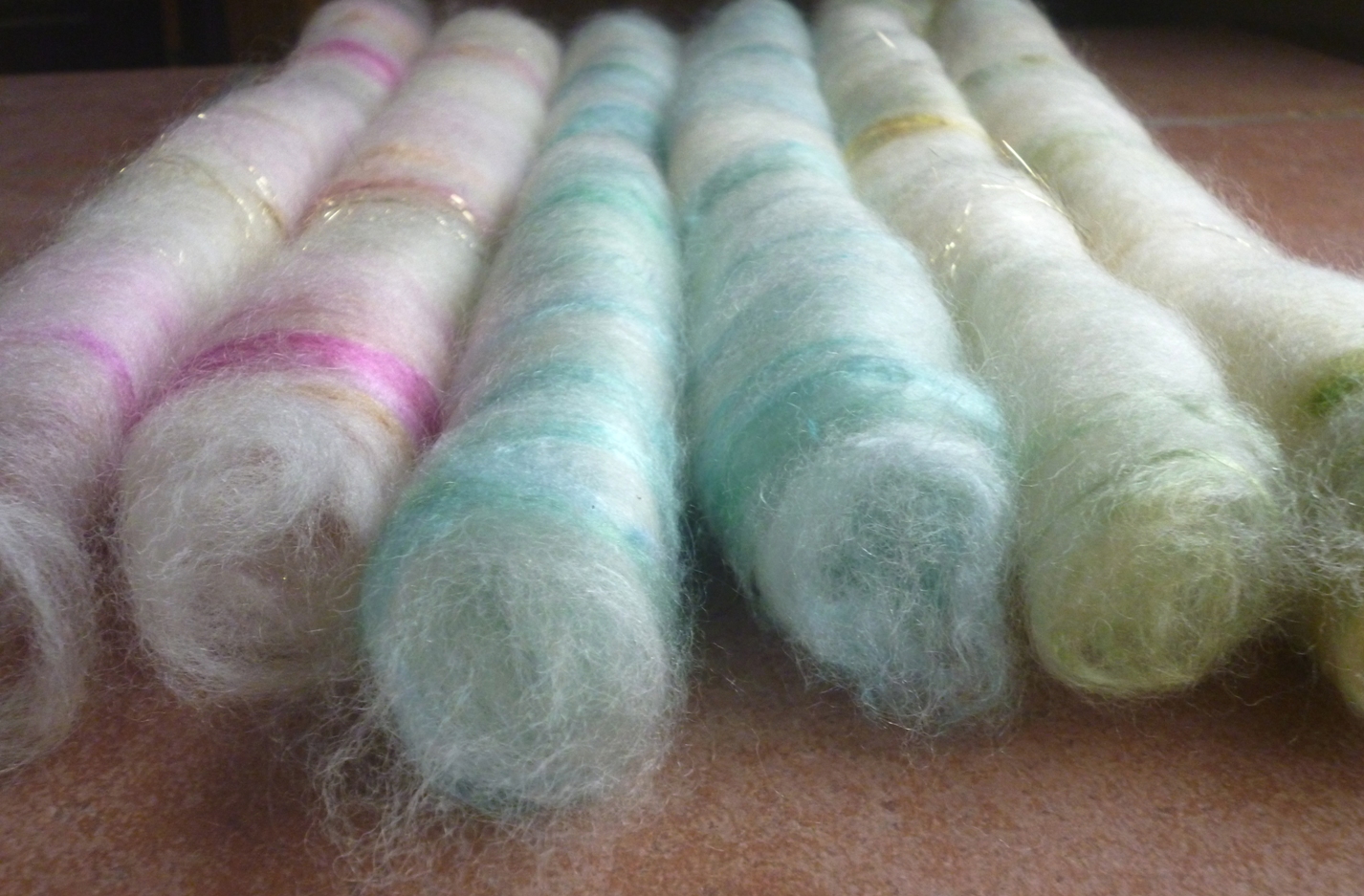
For the past few weeks I’ve been playing with my blending board.
This tool really does open up a lot of possibilities for the spinner, provided that one is willing to experiment a little and discover new ways of doing things.
But this is where it gets to be a little bit tricky.
Basically, there are no real “experts” to guide us : all of us are learning how to work with a blending board.
Needless to say, I’m certainly not an expert at using the blending board.
All the same, I thought that I would share a little trick with you that has really helped me out a lot.
First, it must be said that blending and making rolags on the blending board is a lot of fun ! It’s very addictive ! And if that weren’t enough, rolags made on the blending board are so cute, a bit like beautiful little fiber candies !
But up until now, I have had one big problem with these lovely little rolags. Essentially, I’m having a lot of trouble spinning them. These rolags are so dense and tight that the fibre doesn’t draft easily. This has been a real disappointment ! It hasn’t been any fun at all spinning them.
In her YouTube video, Gwen Powell advises us to use one dowel rod for making rolags : either a 1/4″ or a 3/8″ dowel. With one single dowel rod I ended up making rolags that were very dense and tight, and very difficult to spin as the fiber just didn’t draft at all well. In my opinion, this is a technique to be avoided.
On the other hand, in the videos by Blue Mountain Handcrafts, Beth demonstrates how she makes rolags. She suggests using 2, 3/8″ dowels. First, it must be said that her method of making rolags is so much easier than Powell’s. Also, the simple fact that you are using 2 dowel rods and not 1 means that your rolags will naturally be less dense and not as tight. All the same, even if Beth’s technique of making rolags is a vast improvement on Powell’s method, I ended up with rolags that were still too dense and tight to draft correctly. They are pretty, but spinning them is not much fun.
Depuis plusieurs semaines maintenant, je m’amuse avec ma planche à mélanger.
Cet outil nous offre plein de possibilités, pourvu qu’on sache les explorer !
Mais, ça c’est où ça coince un peu.
Bref, ce nouvel outil n’a pas de véritables “experts” : nous sommes tous en train d’apprendre à travailler avec.
Bien sûr, je ne suis pas experte …. mais tout de même, je me permets de vous faire partager un “truc” qui a vraiment tout changé pour moi.
D’abord, il faut dire que mélanger et faire des rolags sur la planche est super amusant ! On peut facilement en devenir “accro” !
En plus les rolags fabriqués sur la planche sont tellement mimi, comme de petits bonbons laineux !
Mais jusqu’à présent, j’ai eu un gros problème avec ces jolis petits rouleaux.
Effectivement, j’ai beaucoup de mal à les filer avec aise. Ces rolags sont si denses et serrés que la fibre s’étire difficilement.
Quelle déception ! C’est une véritable corvée de les filer !
Dans sa vidéo sur YouTube, Gwen Powell préconise d’utiliser un seul tourillon en bois, soit de 6mm, soit de 9mm, pour faire des rolags. Avec un seul tourillon de petite diamètre, j’ai fini par faire des rolags très denses et très serrés qui ne sont vraiment pas très facile à filer. À mon avis, une technique à éviter !
Par contre, dans les vidéos de Blue Mountain Handcrafts, Beth nous montre sa façon de faire. Elle suggère d’utiliser 2 tourillons en bois de 9mm. D’abord, sa façon de faire les rolags est nettement plus facile que celle de Powell. D’autre part, dans la mesure où on utilise 2 tourillons au lieu d’un, les rolags sont moins denses et moins serrés que ceux de Powell. Pourtant, même si la technique de Beth s’avère une nette amélioration de celle de Powell, j’ai quand-même fini par faire des rolags encore trop denses et serrés qui n’étaient pas très facile à filer.
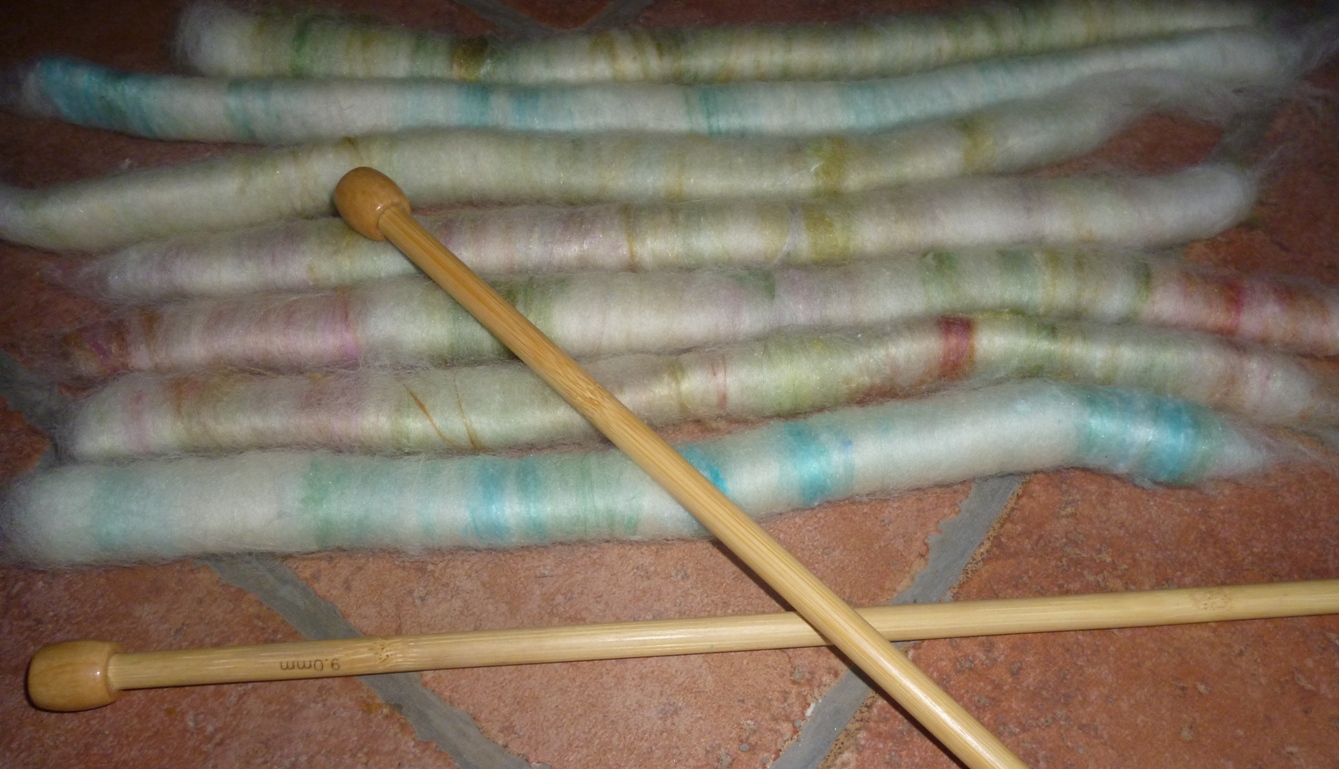
To be quite honest, making rolags that are too dense and too tight just doesn’t interest me at all!
But I’m not ready to give up on my blending board either !
What’s a woman to do ?
I told myself that there must be a way of making rolags that are light, airy, and easy to spin.
After a bit of experimenting, I think I’ve come up with an idea that works!
First I am using two dowels and I’m following Beth’s technique for making rolags.
That being said, I’m only using 1, 3/8″ dowel rod. For the other dowel, I’m actually using a wooden broom handle that measure 1″ in diameter.
With this “big 1″ dowel rod” my rolags are light, open, fluffy, and better yet, easy to spin !!
The fiber drafts so easily and smoothly : the Spinning-Shepherd is absolutely delighted to be able to spin these little gems !
Faire des rolags trop denses et trop serrés ne m’intéresse pas !
Pourtant, je ne voulais pas laisser tomber ma planche à mélanger, non plus.
Alors, que faire ?
Je me suis dit qu’il doit y avoir un moyen pour faire des rolags légers, gonflants et faciles à filer.
Après quelques petits essais, je pense avoir trouvé le truc !
J’utilise toujours deux tourillons et je suis la technique de Beth.
Pourtant je n’utilise qu’un tourillon de 9mm. Quant à l’autre tourillon, il s’agit plutôt d’un morceau de manche à balai en bois de 25mm de diamètre.
Avec ce “gros tourillon” de 25mm mes rolags sont très légers, “ouverts”, gonflants, et surtout très facile à filer !!
La fibre s’étire merveilleusement bien et la Bergère-Filandière est bien ravie de pouvoir filer ces jolis petits bijoux !

They are still cute and lovely, but these big, beautiful rolags made using a 1″ broom handle are a spinner’s dream !
Toujours aussi mimi, ces beaux rolags qui ont été fabriqués en utilisant un manche à balai de 25mm, ont tout pour plaire aux fileuses !
